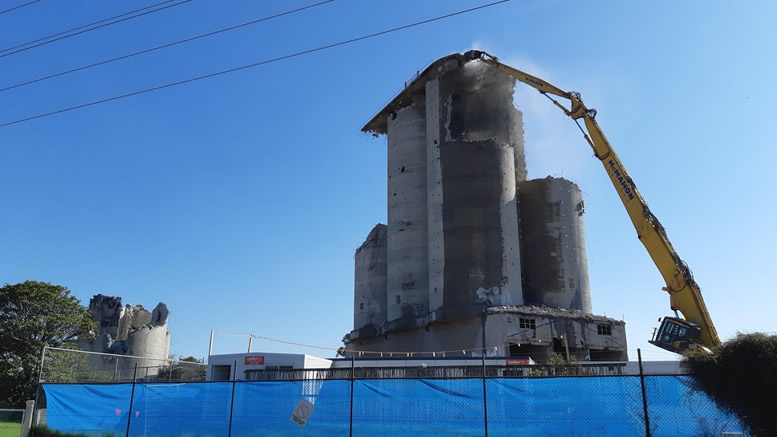 Operated by the Australian Portland Cement Company under the brand name of Geelong Cement, the Fyansford cement works was a major industry for the Geelong Region and was in operation across the 20th Century. While the facilities have been slowly disappearing from the local landscape since closing in 2000 “The Cementies” did make its mark on the region.
Operated by the Australian Portland Cement Company under the brand name of Geelong Cement, the Fyansford cement works was a major industry for the Geelong Region and was in operation across the 20th Century. While the facilities have been slowly disappearing from the local landscape since closing in 2000 “The Cementies” did make its mark on the region.
Opening in 1890, the cement works took advantage of several limestone deposits that could be quarried at nearby Batesford. Despite some early financial setbacks, the cement works embarked on the first of many expansions in 1912 when an aerial ropeway opened to transfer the stone in large buckets from the quarry to the original works in Fyansford. Cement at the time in Australia was in great demand, so expanding the plant allowed the company to keep up with demand and lower our reliance on imports.
The original facility was on the corner of Hyland Street and Deviation Rd, slowly over the years the facility expand across Hyland Street to a new plant that eventually became the main plant. Today this area is now a housing estate with the last remints of a plant disappearing in 2004 when the tall kiln chimneys original built between 1958 and 1968 were knocked down with explosives. The original plant was mostly gone by the 1980’s with the exception of the concrete base of no 3 chimney that can still be seen on Hyland Street with the inscription of “A.P.C. Established 1890” in large lettering.
In 1918 a branch extension of the Geelong railway line extended from North Geelong to the top of the Fyansford hill was completed, allowing for easier transport of cement products. Later in 1926 a private narrow gauge railway replaced the ropeway transporting limestone from the quarry to the plant. The railway was noted for incorporating a 1.3km tunnel which was the longest in Victoria prior to the Melbourne loop opening. This narrow gauge railway itself was replaced by a conveyor system in 1966, part of which still stands and can be seen from the Geelong Ring Road. Today some of the locomotives of the private railway are in the hands of the Bellarine Railway.
The Geelong Cement plant closed in 2001. Since then much of the facilities have slowly disappeared, culminating with demolition of the once landmark silos in 2020 on top of the Fyansford hill.
What will remain of The Cementies buildings for future generations will be the heritage significant former protestant orphanage on McCurdy Road that closed in 1935 and was later purchased by the cement works in 1939 for use as their employee recreation club, as well as the former Geelong Cement head office that is also on McCurdy Road.
Another mark of the cement works on our landscape is the Batesford Quarry that can be seen from Ballarat Road. So large did the quarry become that in the 1980’s the Moorabool River was rerouted for 2.4km so the quarry could mine limestone that existed under the former river coarse. Today the quarry is still operational and is mining limestone, agricultural lime and sand.
